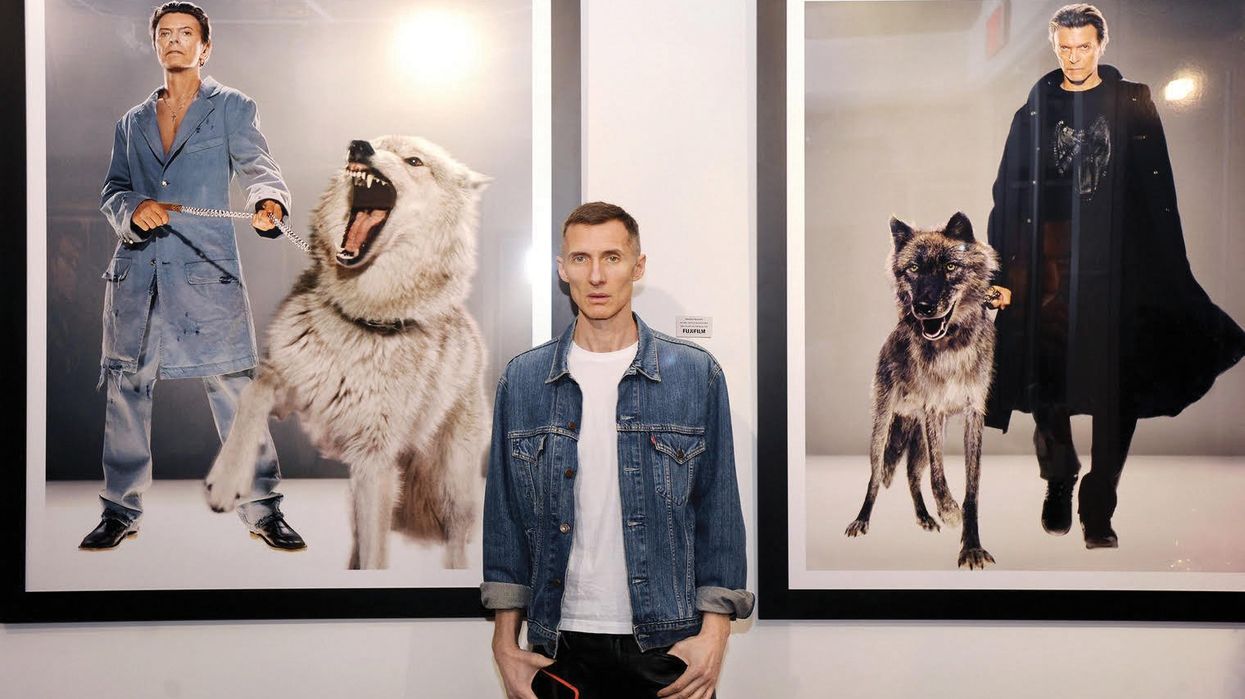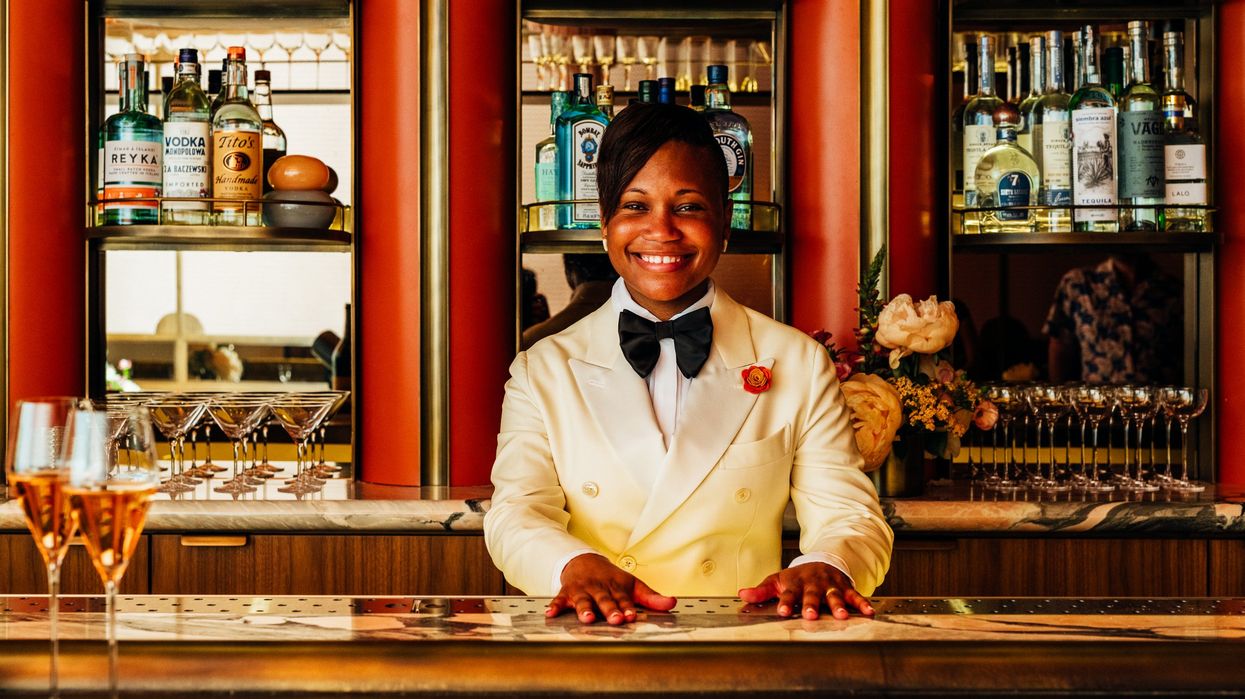Find His Photos — Including a Famous Shot of Beyoncé — Too Commercial? He Couldn’t Care Less!

Photographer Markus Klinko with his pieces ’David Bowie, The Protector’ and ‘David Bowie, Natural Villians’
MARKUS KLINKO ONCE described himself as “the James Bond of fashion photography,” and there’s a bit of truth in that quote. Born in Switzerland of French, Italian, Jewish and Hungarian ancestry, and blessed with a sinewy physique and charming demeanor, this international man behind the lens has landed in Houston for ICONS KLINKO, an eye-popping exhibit of phantasmagoric photos of such superstars as David Bowie, Britney Spears and Mariah Carey, on view through March 25 at Nicole Longnecker Gallery. “Klinko’s photographs have a wonderful iridescent quality that is both painterly and narrative,” says Longnecker. “His images capture not only the form of the subject, but their own creative essence."
In his earlier years, Klinko was a concert classical harpist, practicing 10 hours daily to keep up his technique. “I reached my dream,” says Klinko, “but I was also mentally very tired.” In 1994, at age 33, a thumb injury compelled him to retire from music and pursue a new chapter in life as a self-taught photographer.
Before then, Klinko had never picked up a camera, and yet soon found himself shooting some of the most beautiful people on the planet, including a then-21-year-old singer named Beyoncé, who needed a cover shot for her debut album, Dangerously In Love. During that shoot, legend has it Klinko suggested Beyoncé wear some denim to contrast the glimmering, spiderweb-like crystal top she had draped over her. He loaned Queen Bey his jeans, and gamely finished the shoot in his skivvies. “It’s a totally true story,” says Klinko, who stands 6-foot-4, “and proof that I have Beyoncé’s butt!”
Klinko has since exhibited in dozens of galleries worldwide and is delighted to have representation in Houston. He says visitors can expect some surprises in ICONS KLINKO, including images from a new series called The Angel Factory that pairs breathtaking models with high-tech lasers and syringes used in plastic surgery. Meanwhile, Klinko takes great satisfaction in seeing his images for brand campaigns appear both in the pages of glossy magazines and on the walls of galleries.
“The question ‘Is it art or is it commerce?’ becomes irrelevant at that point,” says Klinko. “It’s just everywhere, and that’s what it is.”














































